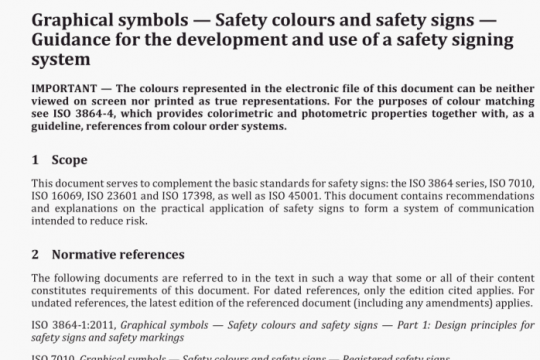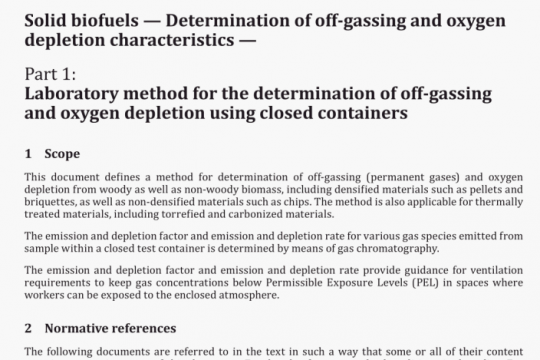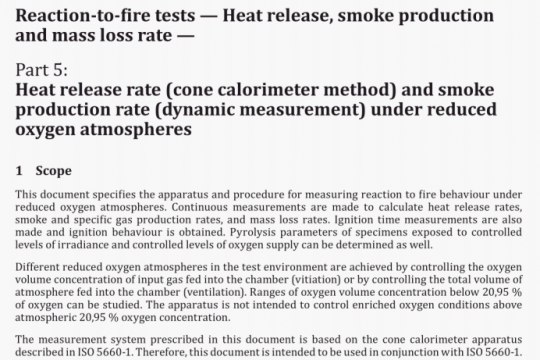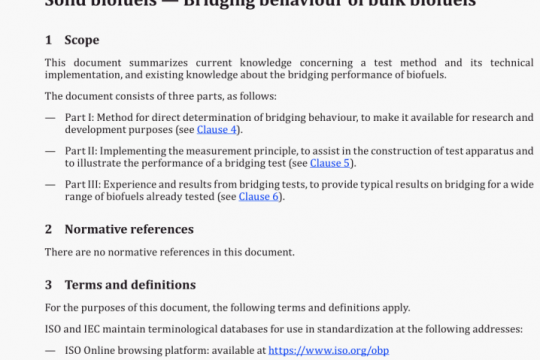ISO 8222 pdf free download
ISO 8222-2020 pdf free download.Petroleum measurement systems一 Calibration一Volumetric measures, proving tanks and field measures (including formulae for properties of liquids and materials).
As nominal and calibrated volumes can have different conditions, both should always be clearly identified as being to contain or to deliver and the standard temperature referenced.
Volumetric measures are classified into two categories separated by what is considered to be a safe weight for manual handling. This division follows guidance given by OIML-R12014i, NIST-105-3Ll and API-MPMS chapters 4.4Li and 4.7LZI.
1) Test measures have volumes between 5 I and 20 I. However, smaller measures including 3,8 I (1 US gallon) and measures down to 11, manufactured in stainless steel or carbon fibre, are also included in the classification. Test measures produced following the design, specifications and volumes defined in regulatory standards are classified as standard measures. Test measures can also be referred to as field measures when designed to be portable.
2) Proving tanks are measures with larger volumes. Proving tanks can have volumes above 20 1 and extend to tanks up to 20 m3 or above.
Volumetric measures in glass are a category of cylinders or flasks with volumes less than 10 I. These are not covered by this document but may be used as additional volume measures for use in the calibration process. Standard sizes for glass measures are shown in Annex C. Specifications for such measures are given in ISO 4788.
Measures can be top filled or bottom filled.
Drainage of test measures can be by inverting the measure and pouring out the contents or by draining through a bottom connection and valve. Proving tanks are drained from the bottom.
Volumetric measures are constructed of materials which should be resistant to corrosion by water and any other fluid which may be used, including cleaning fluids. Stainless steel is the most common material; however, other metals can be used, particularly in older measures. Carbon steel can be utilized for large secondary measures if internally protected from corrosion through coating with epoxy resin, phenolic or glass. The use of unprotected carbon steel should be avoided as it is subject to corrosion and deposition even if hydrocarbons are the only fluid to be used. A low or well-defined coefficient of expansion of the material is chosen, hence the use of materials such as aluminium and plastic is not normally acceptable (carbon fibre composite being the exception as it has a very low coefficient of expansion).
The material used needs to be documented and the coefficient of expansion given in the design documentation and calibration certificates. This should also be engraved on the marking plate where possible. Suggested default coefficients of expansion of materials are given in Annex A.
Construction and design are such that there is minimal distortion of the measure when filled or emptied. This is achieved through adequate thickness of the materials. Strengthening bands and shaped end closures provide adequate stiffness to the measure. Measures are exclusively cylindrical in shape.
The design and construction should ensure all liquid drains from the measure when it is emptied and all air is expelled when it is filled. The cylindrical section should be vertical or at a slope, with ends constructed with a domed or coned shape. Slopes on cones and cylinders should be approximately 30° to the horizontal. Standard proving tanks and test measures have specified slopes for top and bottom cones.
Internal welds and joints should be smooth and constructed to avoid retention of fluid or air. The surface finish should be smooth to minimize liquid clingage and contamination through deposition.
Any inspection flanges or joints between sections of the measure should be constructed with metal- to-metal face joints sealed with O rings or non-compressible gaskets to ensure no change in volume in use, or minimal change if disturbed. Similarly, any insertions into the measure such as thermowells, connections to sight tubes, windows and valves should be of welded construction or metal-to-metal faced joints and angled to avoid liquid or air entrapment.
There should be a top vertical neck section with a diameter designed to provide suitable resolution of volume measurement. In proving tanks there can also be a bottom neck.
All measures should have means of indicating the volume through the use of a sight glass or window with a scale, or alternatively a weir, associated with the top neck. This provides the top datum to indicate the volume. A bottom datum is established at a fixed location which can be the plane of the drain valve, a weir or a level in a sight glass or window on a bottom neck.
Any valves used with a volumetric measure, for filling or draining, should be demonstrably bubble-tight on low differential pressure tests. Depending on the duty, valves used for filling should also be leak- tight at the appropriate pressure. A method for checking valve leakage in the system, usually by means of visual inspection, is required.
One practical leak-testing method is to first have the measure in a thermally stable environment. It is then filled and the level recorded, with all surfaces under the measure dried. It is then left undisturbed for a period of 1 h or more before rechecking the level has remained constant and the surrounding area shows no signs of leakage.
Valves should be sized to suit the filling and drainage flowrates required by the measure. Double block valves can be reiuired in some locations.ISO 8222 pdf download.




